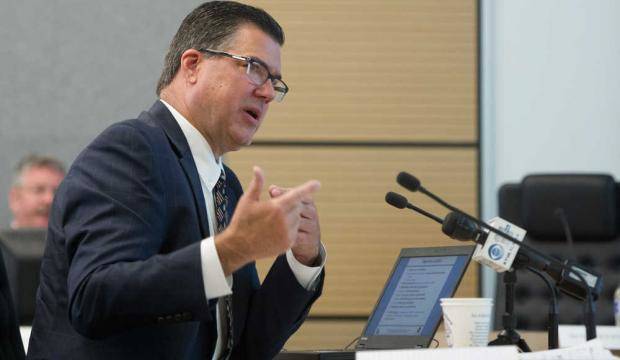The Alaska Gasline Development Corporation came back from China with a roadmap to build a trans-Alaska natural gas pipeline.
The corporation now faces a critical question: Does it have enough money to last out the year?
According to information presented at a Monday night meeting of the House Resources Committee, AGDC will spend $37.1 million between November and June. The state’s new fiscal year starts July 1, and on that date, the corporation is expected to have about $41 million left in its accounts. By that point, the corporation expects to be spending about $6 million per month as it plans and negotiates deals for an 800-mile natural gas pipeline bookended by a pair of multibillion-dollar petrochemical plants.
Because the state’s oil companies have backed out of the pipeline project proposed by the AGDC, the State of Alaska is footing the bills.
Keith Meyer, president of AGDC, told lawmakers that it might soon find a partner to help with the bill-paying. If not, the Legislature will be asked to authorize more money.
“Whether or not the state is the source has not been determined,” said Rosetta Alcantra, the corporation’s vice president for communications. “If there’s an ask, certainly we’ll put the appropriation request out there.”
Rep. Dan Saddler, R-Eagle River and an attendee of Monday night’s meeting, said by phone Tuesday that it appears AGDC is “in the middle of a charm offensive” directed at Alaskans.
While he’s glad the corporation is “coming out of their shell a little bit to explain things a bit better,” he said Monday’s discussion didn’t get to the guts of any agreement with Chinese firms or any other companies AGDC is dealing with.
He also said it’s unclear whether AGDC will ask for more money from the Legislature in the coming year.
“We got no answers to that,” he said. “We did not get a lot of firm answers, in general.”
Rep. Geran Tarr, D-Anchorage and co-chairwoman of the House Resources Committee, said she also hasn’t heard whether AGDC will ask the Legislature for more money.
“The answer I’ve been getting so far is that they’re still putting together their budget,” Tarr said.
Earlier this year, lawmakers didn’t appropriate any additional money for the pipeline project and came close to transferring $50 million out of AGDC’s accounts for other efforts. Lawmakers remain cautious, particularly given the state’s multibillion-dollar budget deficit, about additional pipeline spending.
“There’s so much uncertainty and it’s a challenging fiscal time right now,” she said. ”I can see why folks … want a little more to go on before they say they should put some more funding towards it.”
Tarr said the Legislature should be prepared to be flexible and nimble if the pipeline shows promising signs later in the year and needs more money. Meyer told lawmakers that there will be a significant May “check-in” on the progress of the agreement with China.
Last month, Meyer and Gov. Bill Walker signed a joint development agreement with three of China’s biggest companies. That nonbinding agreement calls for a December 2018 deadline for a firm deal. That means AGDC will attempt to finalize agreements with constructors, customers and gas producers, tying them all together like the strands of a rope.
While AGDC has a tentative plan for negotiations with customers, it doesn’t have an agreement in hand from gas sellers. While Alaskans own the natural gas that remains in the ground and will own the pipeline that transports the gas, they still rely on companies like BP, ExxonMobil and ConocoPhillips to extract it from the ground.
“BP continues to be supportive of Alaska LNG project led by the State of Alaska and has extended our cooperation agreement with AGDC,” said Dawn Patience, a spokeswoman for BP, by email. “We will continue to look for ways to support the state and AGDC in progressing this project. We look forward to better understand the terms of the agreement and the role envisioned for gas resource owners, like BP.”
• Contact reporter James Brooks at james.k.brooks@juneauempire.com or call 523-2258.

